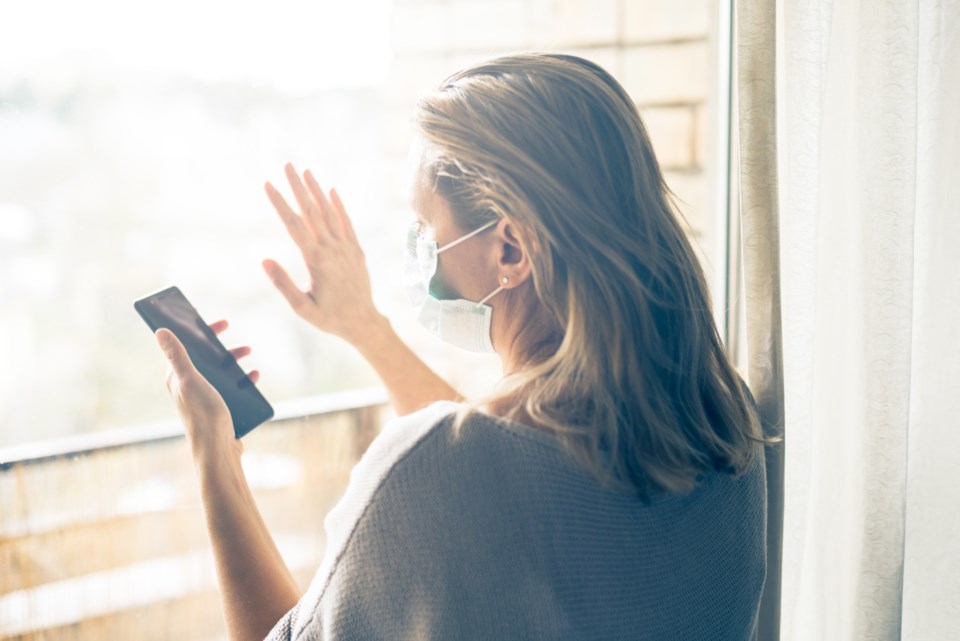Ontario’s top medical officer of health today urged all local medical officers of health to use the authority it has under the Health Protection and Promotion Act to order people ill with COVID-19 and anyone who has had contact with them to isolate and stay at home.
Up until now, the advice to self-isolate for 14 days was strongly suggested to people who travelled to an affected country, developed symptoms of COVID-19, or had contact with someone who did.
People turning up at Southlake Regional Health Centre’s COVID-19 assessment centre who screen positive for the respiratory disease and who do not require hospitalization are also sent home to voluntarily quarantine for 14 days.
There have been increasing complaints from the community who see neighbours known to be in self-isolation out shopping, and others walking in groups of more than five people, contrary to provincial emergency measures.
But under the act, the legislation that guides the delivery of public health services in Ontario, medical officers of health can issue orders to individuals and classes of individuals to require them to take or stop taking specific actions with respect to a communicable disease, York Region spokesperson Patrick Casey said.
These orders can be issued when the medical officer of health is of the opinion, upon reasonable and probable grounds that:
- A communicable disease exists, may exist or there is an immediate risk of an outbreak of a communicable disease;
- A communicable disease presents a risk to the health of persons in the health unit served by the medical officer of health; and
- An order is necessary in order to decrease or eliminate the risk to health presented by the communicable disease.
"For example, an order may be issued if there is an individual with COVID-19 and they are not self-isolating and continue to make trips out into the community, putting others at risk of acquiring COVID-19," Casey said.
This move comes as Ontario’s COVID-19 cases continue to climb skyward, with 426 new cases added today for a provincial total of 2,392. To date, 37 people have died and 689 are listed as resolved, meaning the patient has recovered.
York Region has also seen a rapid rise in the number of COVID-19 cases with a total of 290 reported this morning. That includes 17 cases in Newmarket, 11 in Aurora, and 133 in Vaughan. So far, six York residents have died, and a reported 49 per cent of the cases are self-isolating.
“Given the increasing number of cases, all public health units should implement more aggressive contact tracing and management as we all work collectively to flatten the curve,” Ontario’s chief medical officer of health Dr. David Williams said.
“As such, I am strongly recommending that medical officers of health use their authority under Section 22 of the Health Protection and Promotion Act to ensure isolation of cases and contacts of COVID-19,” he said.
To help tamp down increasing incidences of community transmission across the province and in York Region, and to flatten the curve of transmission so that local health care systems are not overwhelmed, York’s medical officer of health Dr. Karim Kurji can issue an order to an individual or a business specifying certain actions they must take.
That can include mandatory isolation for any person who has COVID-19, forced closure of a business, the cleaning and disinfecting of a facility or building, and requiring a person to submit to a physician’s exam to show whether or not they are infected with a communicable disease.
Ontario’s response to COVID-19 includes $100 million in additional investments for public health units to support COVID-19 monitoring and testing, including funding to support enhanced contact tracing.
Contact tracing is a labour-intensive process that finds public health officials identifying and interviewing everyone who has come into contact with a person who has COVID-19, including family members, work and school colleagues, and health-care workers, Dr. Kurji has said.
When those contacts are not known, such as if an infected person rode a public transit bus on a given day and time, health officials provide the details of the incident to the public and encourage anyone affected to come forward.



